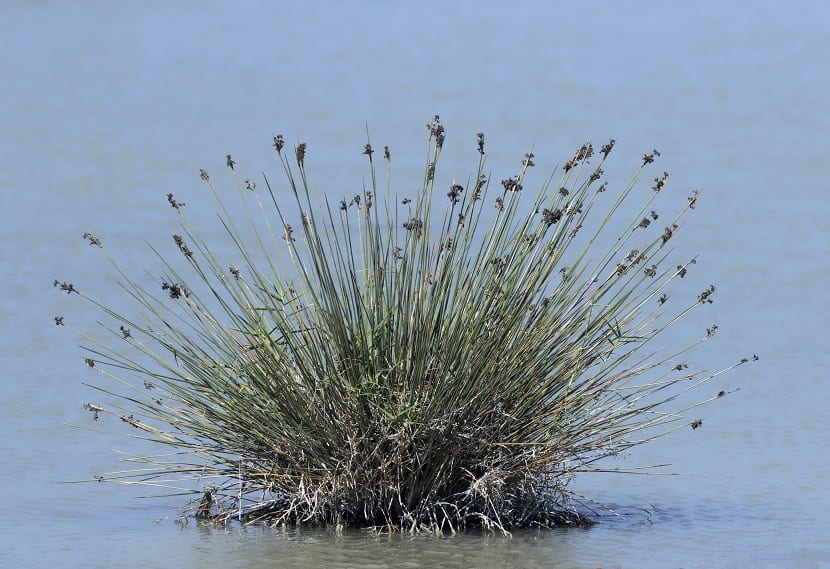
Today we are going to talk about a type of multi-regional aquatic plant that develops in different areas. Its about juncus maritimus. Commonly known as the roof reed, it can be found in marshy and humid areas whose soils are brackish. It is a perfect plant to have in your garden and give a more natural touch to your home. With so much urbanization and industrial development, we look for some nature and we can have it in our garden if we know how to decorate well and what the necessary care is.
For that we are going to dedicate this entire post to juncus maritimus. We will explain what its main characteristics are, the uses it can be used for, and its care.
Key features
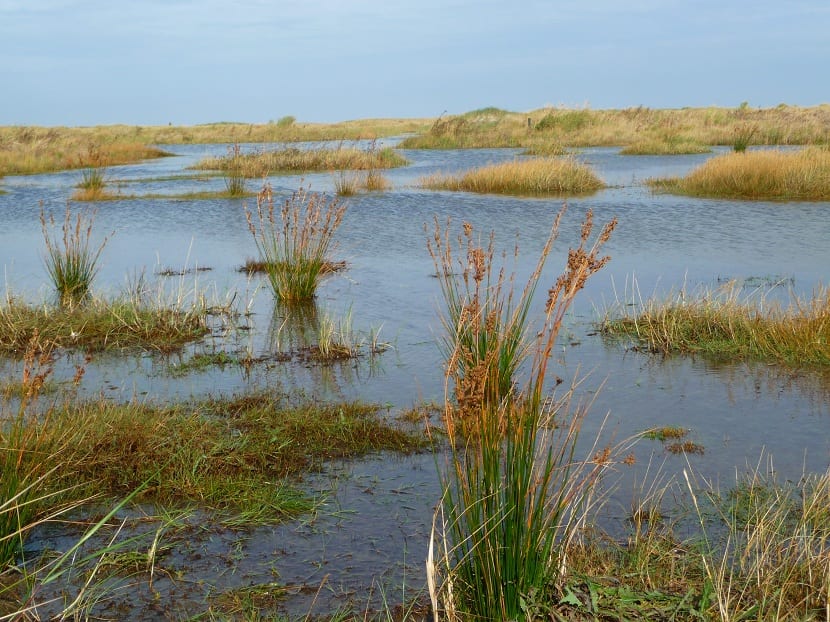
Since people seek to have a somewhat more natural lifestyle, they buy different species of plants that serve to beautify the patios and / or gardens. This plant becomes a good option for this, since it hardly needs maintenance as we will see later. Most of the cares are related to keeping the plant with a high degree of humidity, since its nature is like that.
We naturally find it in swampy areas with high humidity. These conditions must be perfectly imitated when we have it at home so that its adaptation process is the best possible. The reason why the common name is roofing reed is because it has long been used for braiding and joining.
It has a fairly slow growth and is scattered along the coasts of the whole world. We can find it in Africa, Canada or South America. In general terms, we can say that it is a plant that belongs to the reed family. It was discovered in 1753, although there is no record as such to say that this particular type of reed was discovered in this year. It was surely best known in the fishing areas and ports where they are found in greater abundance.
The main characteristic of the juncus maritimus is that its leaves are cylindrical and tip-shaped with greenish colors. The maximum height it can reach is up to 2 meters. They are not usually more than a meter high and another meter wide. All this depends on the environmental conditions and the specimens in question.
The flowering of this plant takes place in the warmest times of the year. It begins in many specimens in spring and ends in late summer. The start and end date of flowering depends on the temperatures. The earlier the high temperatures arrive, the sooner they will begin to bloom. The flowers are characterized by grouping in inflorescences with colors ranging from pink to brown. As for its fruit, it is known as achene and has a convex shape with 3 filaments.
Uses of juncus maritimus
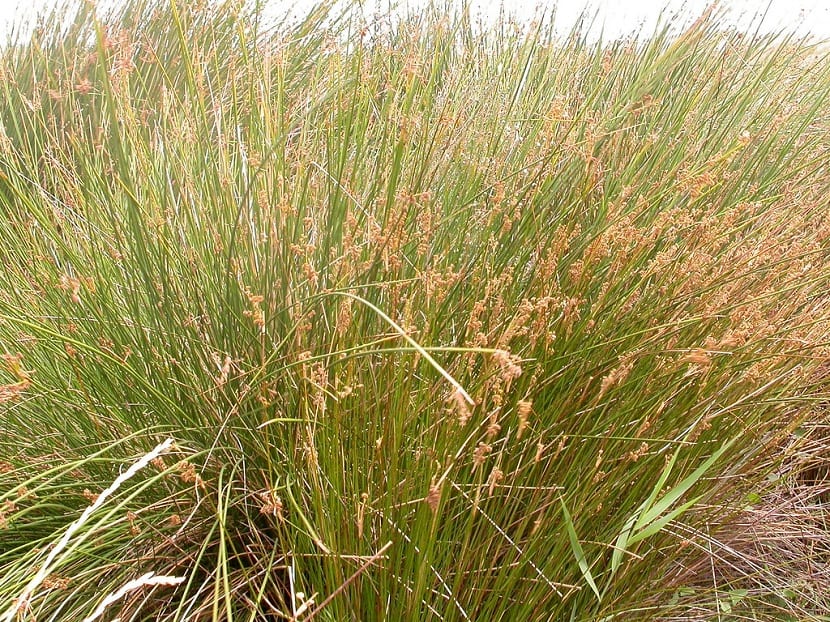
It is a plant that has been traditionally used for ornamentation. It is a difficult plant to find in nurseries, since it is neither popular nor hardly known. However, although it is not a very widespread plant by people, it is quite satisfying to have at home, since it fulfills its function of decoration quite well and hardly needs care and maintenance.
One of the most frequent uses of juncus maritimus it is that of environmental restoration. Normally, it is perfect for restoring landscapes and places somewhat more degraded by pollution in coastal areas. This is done because the water is salty and is suitable for people who love water gardens. Not only is it a good plant for ornamentation or restoration, it has also long been used to weave baskets from the straw of this plant.
If you have any of these plants at home and their leaves are drying, they are quite resistant and hard and you can make baskets with it.
Caring for the juncus maritimus
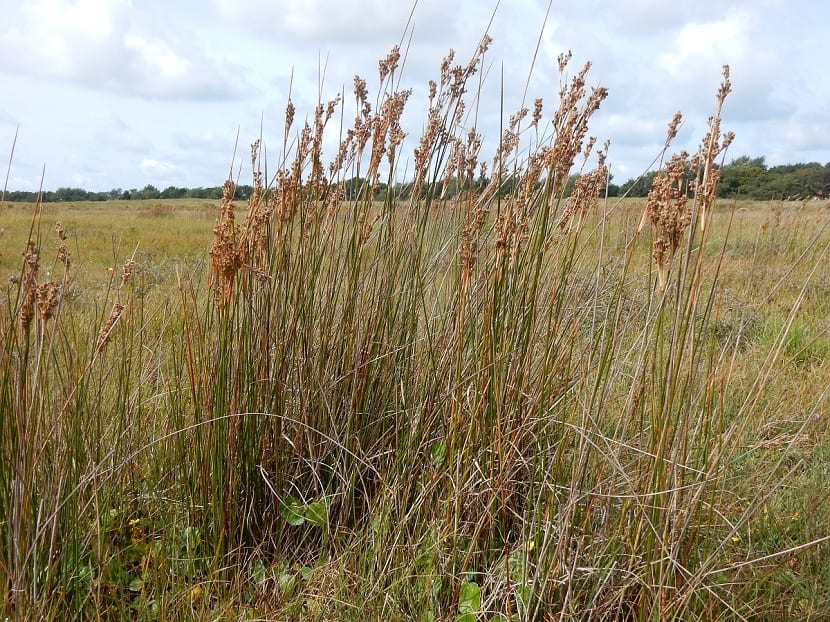
Now let's move on to the care that this plant needs to be able to develop in conditions. Although it is not just demanding, it does need some important aspects to give it good care. For example, location is pretty important. It is necessary that the roofing reed is placed in a place where it can have direct sun. It needs a large amount of sunlight a day to develop in good conditions.
A perfect place to place them would be on the garden lawn. Its leaves puncture, so it is advisable not to place them near the steps or paths to avoid puncture or any type of accident. Regarding the soil, it does not need special requirements, but it does need to be kept with high humidity at all times. Being native to environments such as streams, swamps, lagoons, and coasts, a high degree of humidity must be maintained. To do this, it is best to water it often enough so that the soil never gets dry.
It is also interesting to use some organic fertilizer during the spring until the end of summer. This is because it is the flowering time and it requires a little help to be able to stay healthy in the hottest moments of the year. We can use some organic products like tea bags, banana or egg peels and even manure.
Where to buy it
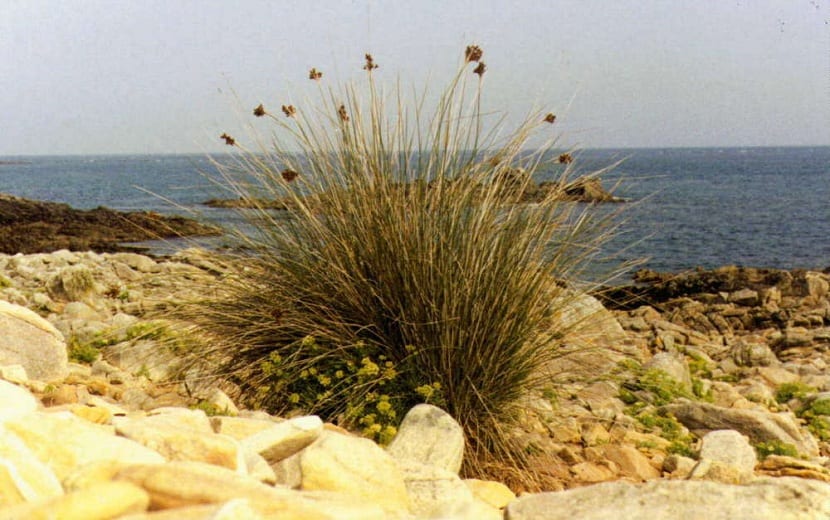
As we have mentioned before, the juncus maritimus It is not a plant that you can usually find in nurseries. However, in nature it is very abundant and is quite expensive in nurseries. Its price is around 14 euros, which is quite expensive. When you have it, you can transport it to your home with ease and place it both in the garden and in a flowerpot. It is a way to make your garden look better with a plant that only needs a lot of watering and a location in the sun.
How can you see the juncus maritimus It is a plant that can be used perfectly to give a natural touch to your garden and with fairly easy care. I hope this information has convinced you to incorporate a copy of these to your garden.